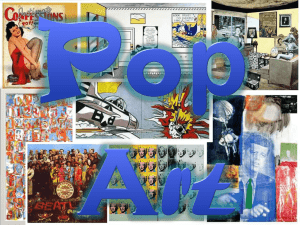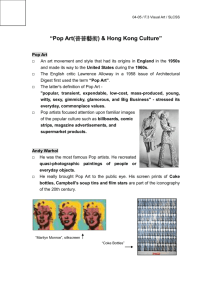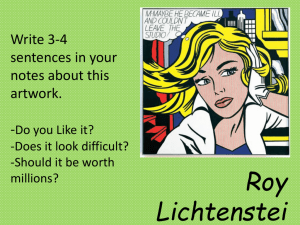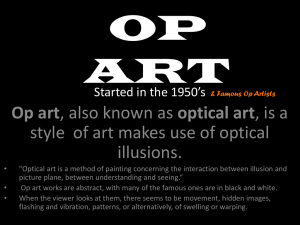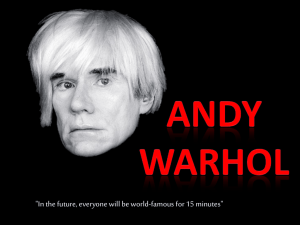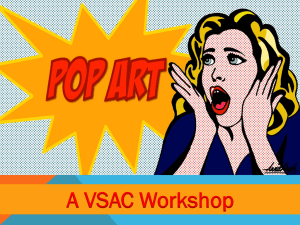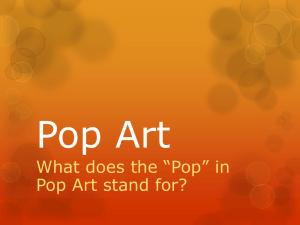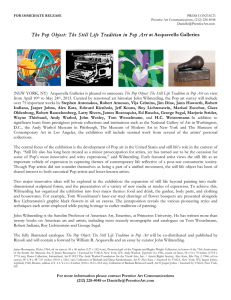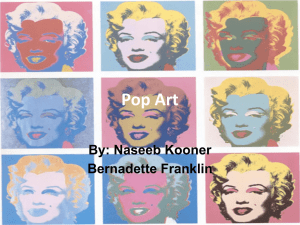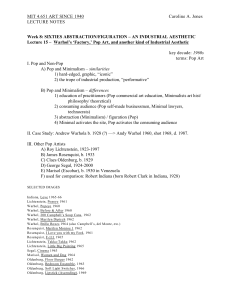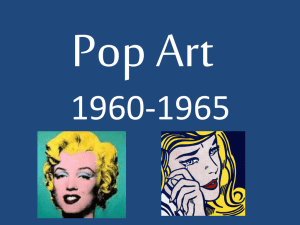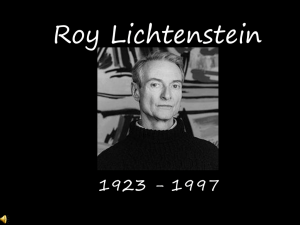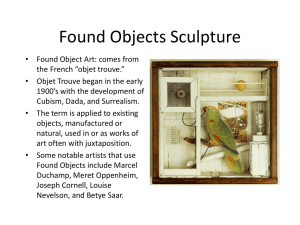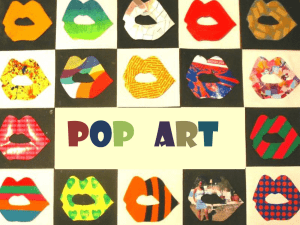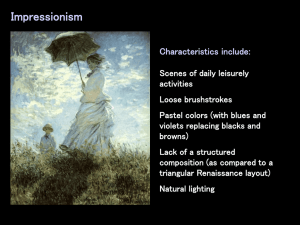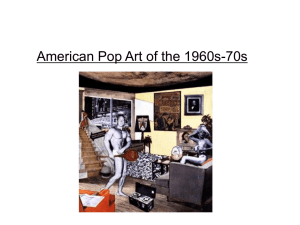OP Art - TravisVisArt
advertisement
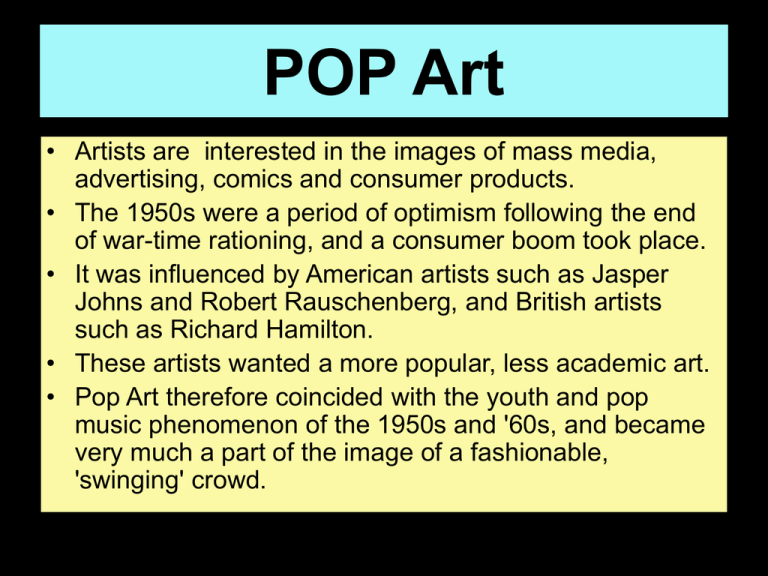
POP Art • Artists are interested in the images of mass media, advertising, comics and consumer products. • The 1950s were a period of optimism following the end of war-time rationing, and a consumer boom took place. • It was influenced by American artists such as Jasper Johns and Robert Rauschenberg, and British artists such as Richard Hamilton. • These artists wanted a more popular, less academic art. • Pop Art therefore coincided with the youth and pop music phenomenon of the 1950s and '60s, and became very much a part of the image of a fashionable, 'swinging' crowd. POP Art • After the popularity of abstract Expressionism this is a return to pictorial (recognizable) subjects. • The paintings are slick; the mark of the maker (brushstrokes, etc.) are absent. • The images are presented in a cool detached manner. Richard Hamilton Just What Is It That makes today's Homes So Different, So Appealing? 1956 • • • • • • • • • • • • Richard Hamilton wrote down a prescription for Pop in 1957; he declared that Pop should be: Popular Transient (short term solution) Expendable (easily forgotten) Low-cost Mass-produced Young (aimed at youth) Witty Sexy Gimmicky Glamorous Big Business ... • • • • • • Part of pioneering exhibition "This is Tomorrow" by a group of Brits. Word Pop makes first appearance Chief images of later pop are compressed into the collage. Young Romance comic,& image borrowed from Art History (Lichtenstein) Package of ham (Oldenburg) Celebs. like Al Jolson (Warhol) Andy Warhol Andy Warhol • Worked as illustrator for shoes. • As designer he understands how ads. create & satisfy consumer needs. • Son of Czech immigrants in depression • Yearned for American dream of fame & fortune • Reflected in choice of subject matter (Glamour mags., Celebs. Commodities) • Influenced by J.J & R.R. & appropriation of mass produced images. • Zeros in on mass production & boring repetition. "I think everybody should be a machine." Marilyn 1962 • Photo silkscreen on canvas. • Combines theme of Celebrity & Death. • Marilyn image loaded with sexuality. • She is an Object of desire, strengthened through repetition. • Completed shortly after her death • The doomed Beauty died at 36 of an overdose. Saturday Disaster 1964 "When you see a gruesome scene over and over again it doesn't have an effect." Tragedy is depersonalized through repetition. • Picks up on subject of the public’s morbid fascination with disaster & death. • The media's obsession with this topic satisfies a need. They exploit it. • Warhol too exploits, but also gives cause for reflection by removing it from its context, & making it art. Roy Lichtenstein Roy Lichtenstein • Focus is print, specifically the comic books of the 40's & 50's • Uses limited, flat colour, and hard edged drawing. • Fond of subtle parody & irony • He reproduces the Ben Day printing dots used in the commercial printing of comics • He uses themes of violent action & sentimental romance. Lichtenstein, Masterpiece, 1962 • Meant to be humorous and self referential • Parodies the romantic notion of an artist life • Increased size of B.D. dots & outlines creates new formal concerns requiring transformations, and manipulations that separate this from the low art sources.. • Amplifies the intrinsic artificiality • Single frame unresolved Coarse The Benday combines two coloured dots The process illustrator and Medium Fine Dot printing process (or more) different small, to create a third colour. was named after US printer Benjamin Day. Whaam! 1963 • From comic American Armed Forces at War • Uses clichés of comic: speech bubbles, emphatic lettering, stylized explosions, & bright colour. • He combines the Renaissance tradition of a diptych, with a comic. • The 13' X 5' size amplifies the American obsession with violence’ war & killing. • IIt is painted during the Vietnam & Cold war. • He depicts a moment of crisis & tension with no indication of resolution. Claus Oldenburg Ice Bag 1966 • The medium is vinyl that has been sewn together. • This is a material that is more commonly used in the manufacturing of commercial products, than it is in art objects. • By greatly increasing the scale of the object, he changes the way we look at it; it somehow gains greater importance than it deserves. • The soft sculpture inflates and deflates, making real movement a part of the experience of looking at it. • The lifelike breathing effect is amusing, but disturbing at the same time.
